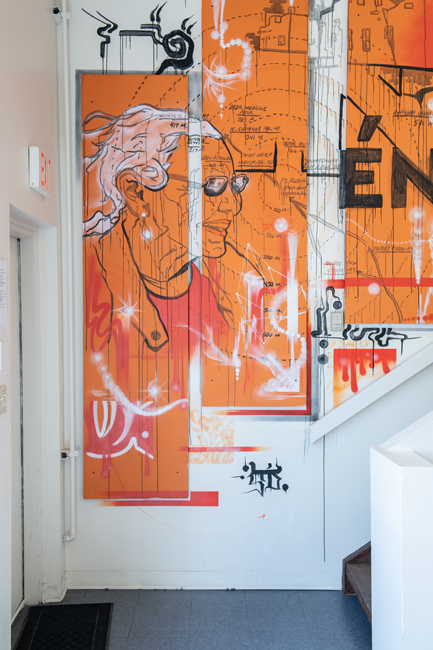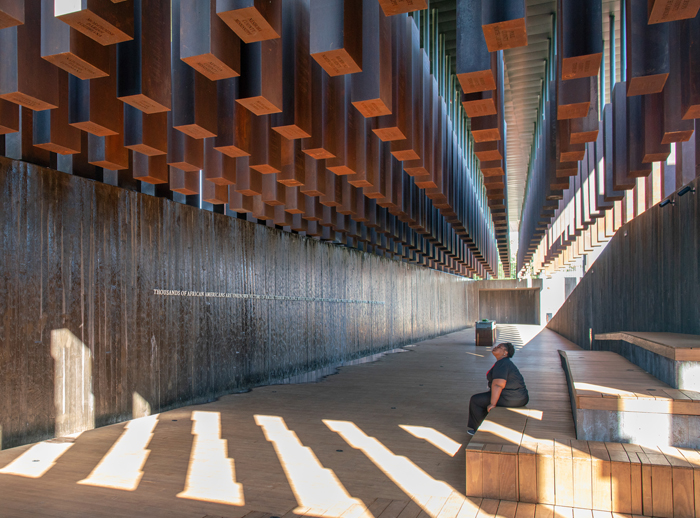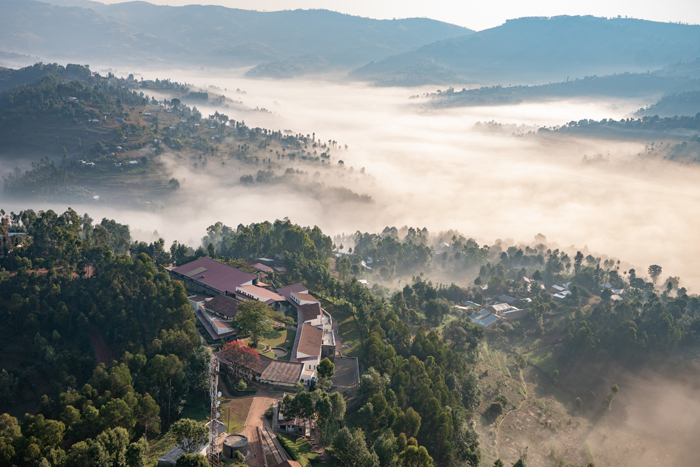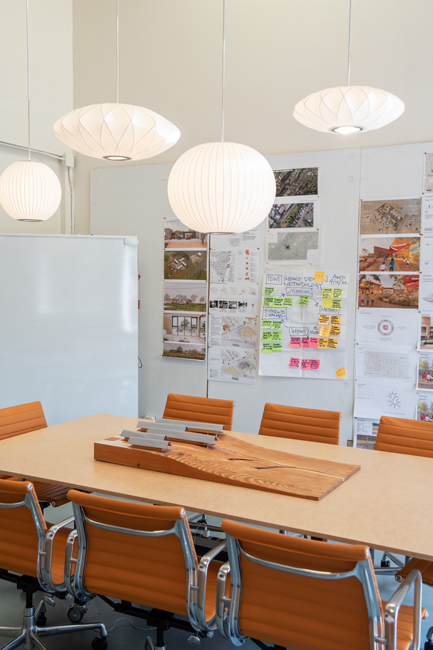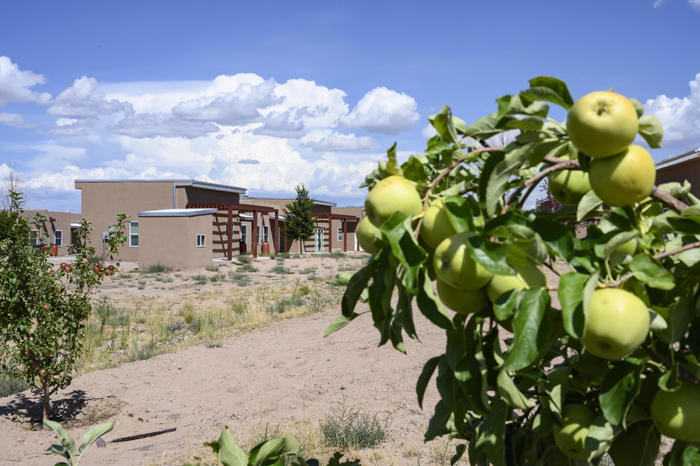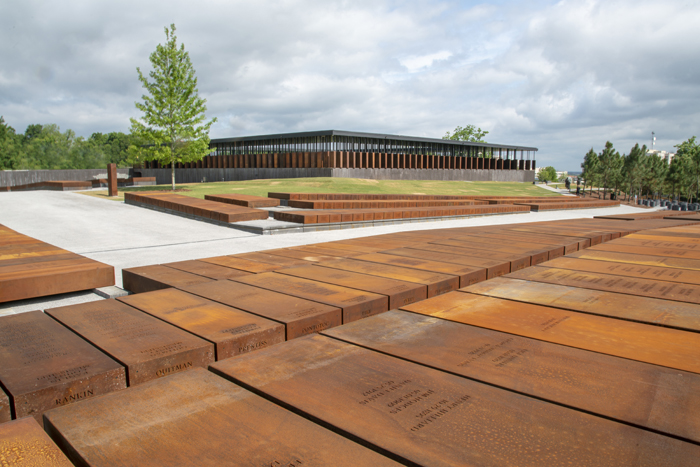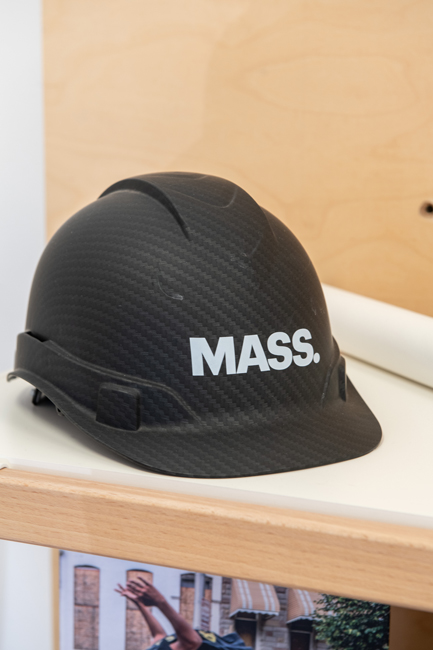MASS Design Group, an international humanitarian architecture firm in Santa Fe, recasts architecture and design in the Southwest.
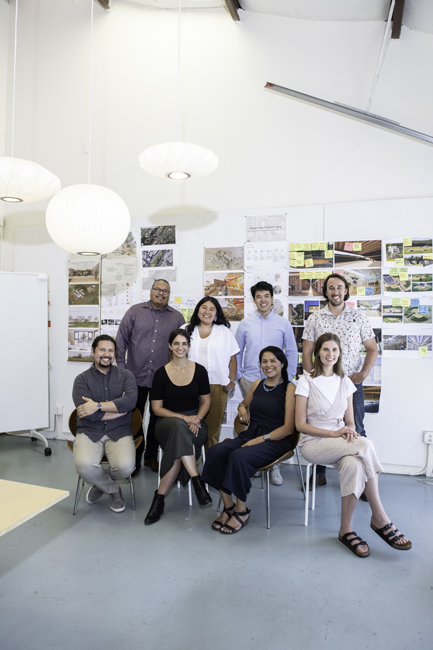
In 2017, a unique, affordable housing complex—grounded in the concept of listening, dedicated to the idea of restorative reconciliation, and realized through an authentic partnership between Native and non-Native people—opened in New Mexico’s Indian Country.
The Wa-Di Housing Development at Santo Domingo Pueblo (also known as Kewa Pueblo), located roughly halfway between Albuquerque and Santa Fe, is a site-specific and culturally specific mix of forty-one housing units that honors and amplifies the Pueblo’s cultural traditions. Rather than a cookie-cutter development, Wa-Di’s design is synergistic with the Pueblo’s landscape and works in concert with the specific and nuanced ways of life of Santo Domingo residents, where nearly seventy-five percent of the Pueblo’s tribal members rely on the arts as a main source of income.
“It’s not just a general way of providing housing,” says Joseph Kunkel (Northern Cheyenne), head of the Sustainable Native Communities Collaborative, one of the lead partners in the Wa-Di project. “We can think about what is culturally relevant architecture and design as it relates to the communities that we’re working with.”
In 2019, SNCC merged with the international nonprofit MASS (Model of Architecture Serving Society) Design Group, which opened a Santa Fe office now anchored by the Sustainable Native Communities Design Lab at MASS Design Group. Today, MASS’s Santa Fe office—like its headquarters in Boston, Massachusetts and offices in Kigali, Rwanda; Poughkeepsie, New York; and Bozeman, Montana—offers architectural and design services that are accessible, inclusive, and focused on the communities that need them most.
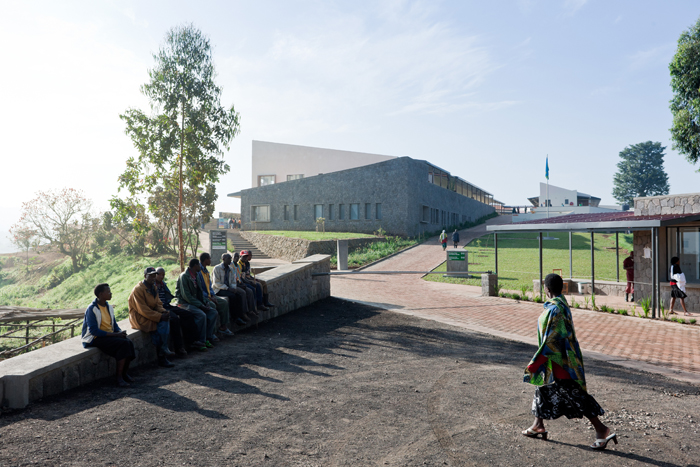
Overall, MASS, which was established in 2008 and seeks to reverse “disparities in our built environment [that] perpetuate social and environmental injustices globally,” is cemented in sustainable development principles such as human dignity, civic engagement, and how an inclusive design and construction field can strengthen a community’s identity.
“We approach our projects with a process that we call immersion,” says Matthew Smith, managing director of operations at MASS. “We recognize that because we aren’t present in every community in which we work, we find partners who we think are respected and admired and have a solid understanding of the community they serve. We partner with them to help us navigate the community and the social-political dynamics of a space.”
We approach our projects with a process that we call immersion. —Matthew Smith, managing director of operations at MASS Design Group.
MASS’s first project, Butaro District Hospital in Rwanda’s Burera District, collaborated with Partners in Health, which helps regenerate communities that have experienced violent conflict. The healthcare center, which opened in 2011, largely declined the use of heavy machinery for hands-on construction and local fabrication, which not only afforded the local community additional job opportunities but also gave locals greater agency over the hospital’s design.
A few years later, MASS was invited to work in Haiti in another mission-focused partnership with Les Centres GHESKIO that materialized into the Cholera Treatment Center in Port-au-Prince. The medical center not only focuses on treating the curable, waterborne disease, but it also sought to help rebuild the nation’s shattered infrastructure that was essentially destroyed by the 2010 earthquake.
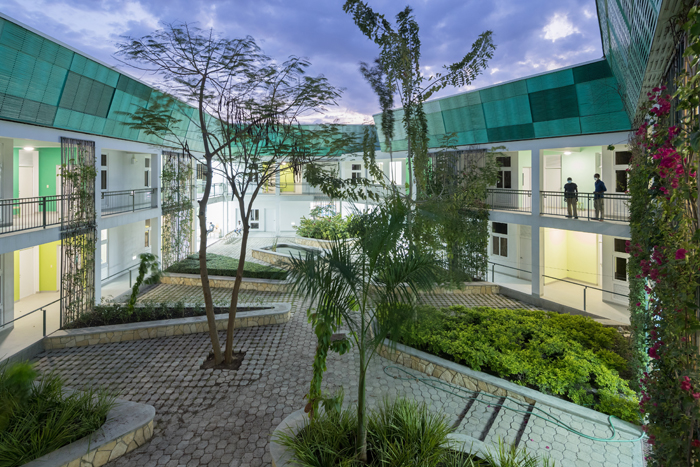
“One of the strategies was to reduce the spread of cholera by integrating a sanitation system where waste would be safely treated on site before being discharged,” Smith explains. “Haiti was obviously quite different than Rwanda. Haiti didn’t have the natural resources that Rwanda had, so timber was very hard to come by. We had to look at how that project could create positive social impact in a really different environment.”
Smith says the project received incredible support from Haitian metal workers. The workers used salvaged steel oil drums to build the façade of the healthcare facility via a design developed by the Massachusetts Institute of Technology that also allowed for maximum airflow and circulation in the open-air Cholera Treatment Center.
In the company’s first ten years, MASS—a recipient of a National Design Award in Architecture from the Cooper Hewitt, Smithsonian Design Museum in 2017, an Architecture Innovator of the Year honor by the Wall Street Journal in 2020, and the 2022 AIA Architecture Firm Award from the American Institute of Architects—has thirty completed or in-construction projects, and has partnered with more than 100 organizations in twenty-one different countries.
The Wa-Di development at Santo Domingo Pueblo, one of New Mexico’s twenty-three federally recognized tribes, occurred before Kunkel merged SNCC with MASS. However, lessons gleaned from the collaboration with AOS Architects, the project’s architect of record, are inherent to the mission of MASS’s Santa Fe office, which opened in 2019.
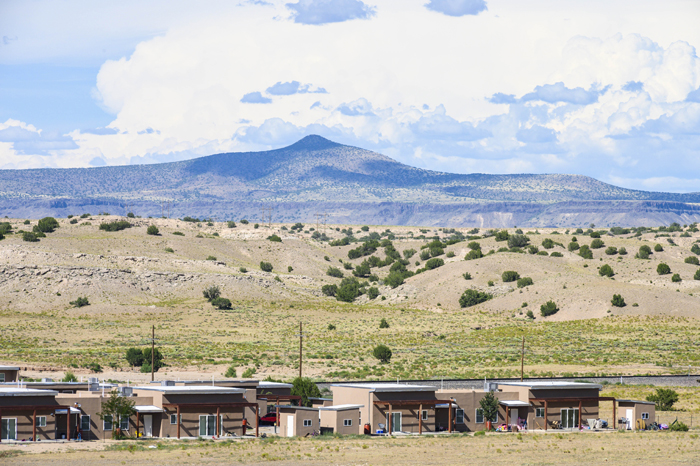
Wa-Di—which includes a 3,000-square-foot community center with a daycare facility, computer lab, playground, basketball court, and a multipurpose space for social events—is an example of culturally relevant and contemporary architecture that’s not just a facsimile of a historic village. Additionally, the nearby Santo Domingo Heritage Trail Arts Project—a pedestrian trail connecting tribal members to a New Mexico Rail Runner train stop—results from equity conversations between Indigenous people and non-Native architects and landscape designers.
“Lifting up this relationship around Native-non-Native partnership is an underlying theme in all our work,” says Kunkel, who was awarded an Obama Foundation Fellowship in 2019 for his work with Indigenous communities.
Lifting up this relationship around Native-non-Native partnership is an underlying theme in all our work. —Joseph Kunkel (Northern Cheyenne), principal and director of Sustainable Native Communities Design Lab at MASS Design Group.
Other Southwest-area MASS projects include Barelas Central Kitchen, which is set to break ground in August 2022 and slated to open at the end of summer 2023 in Albuquerque’s historic Barelas neighborhood. The collaborative project between Homewise, Street Food Institute, MASS, and Scout Architecture + Design expands an existing artisan industrial manufacturing space at 1411 4th Street SW and responds to a 2020 community survey that showed that area residents were interested in job training opportunities.
“The overall ethos of the project is business incubation for creative entrepreneurs through affordable production and retail space,” says Johanna Gilligan, senior director of community development at Homewise, a nonprofit that offers homeownership assistance services for low-to-moderate income New Mexicans.
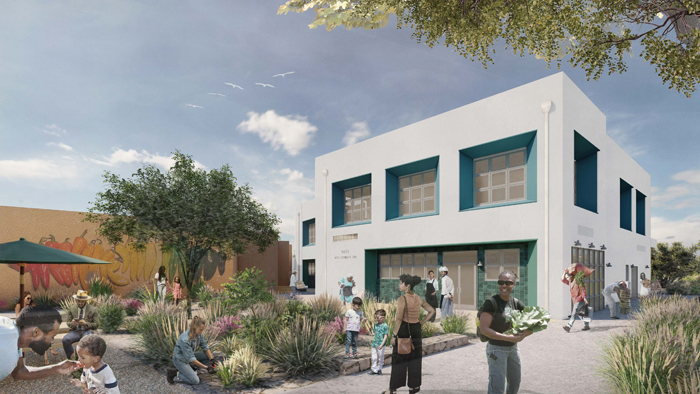
The first floor of Barelas Central Kitchen will be the new home for the Street Food Institute, an Albuquerque nonprofit that trains and supports culinary entrepreneurs. The building’s second floor will include several affordable commercial spaces for rent. Albuquerque-based, women-led Scout Architecture brought their significant regional experience while MASS contributed insights into impact-based design.
“I think MASS really excels at early stage, pre-development,” says Gilligan. “Not only what is the building and what is the basic floorplan, but what’s the mission of the building itself, and what are you trying to achieve? They have a very unique way of helping projects articulate this, and that was really important in this project because it was nebulous and not super straightforward.”
A reimagining of the Moving Arts Española facility is another of MASS’s regional projects. The youth development arts organization, which co-founder Roger Montoya says shapeshifts in response to the needs of the Northern New Mexico community, has been chatting with Kunkel since 2019 about an expansion of its current space, a completely new building, or some sort of amalgamation. The “arts as medicine” nonprofit—which has helped hundreds of youth and their families address food insecurity, improve educational outcomes, and provide behavioral health services for youth and young adults—recently launched a capital campaign for a facility that Montoya says MASS helped envision at a molecular level.
“I love that MASS looks at the humanity of the built environment and the entire ecosystem. They consider the flow of light, the flow of traffic, the flow of the mission itself, and give the space for it to morph and change,” says Montoya. “The idea of flexible programming is key because when you look at human organisms of the planet itself, we are constantly ebbing and flowing. I appreciate that that is inherent in their mission and true to the action of their work. It’s not just a blurb or a bumper sticker.”
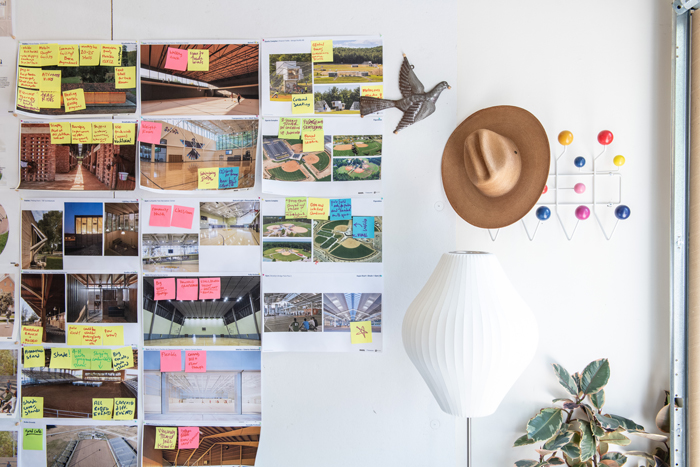
“We looked at their international portfolio and to think that we would be included was humbling,” adds Montoya. In addition to its Rwanda and Haiti healthcare centers, MASS is building the New Redemption Hospital in Caldwell, Liberia to restore community trust following the country’s Ebola outbreak. Additionally, MASS designed the National Memorial for Peace and Justice in Montgomery, Alabama, which is dedicated to victims of racial lynching. The memorial was made possible via a partnership with Bryan Stevenson’s Equal Justice Initiative, which provides legal services for prisoners who may have been wrongly convicted.
The Santa Fe office, led by Smith and Kunkel, who are both originally from Montana, recently launched a fellowship program where Native and non-Native fellows will work in the Sustainable Native Communities Design Lab for a year. The fellowship program is the result of funding from the Carl and Marilynn Thoma Foundation.
Today, Kunkel and Smith—along with design director Nathaniel Corum, senior designer Elena Baranes, senior architect Mayrah Udvardi, designers Celina Brownotter (Hunkpapa Lakota and Diné) and Geraldene Blackgoat (Diné), and summer 2022 interns Austin Sun and Zoë Toledo (Diné Asdzáán)— are focused on creating additional partnerships and fostering dialogue around issues ranging from climate change to economic disinvestment to rural community development.
“This work can’t be done by any one group of peoples,” says Kunkel. “When thinking about reconciliation and healing, it’s going to need to be a conversation between parties and inevitably be a way for us all to work together to achieve a common goal.”
